Are you getting enough fiber?
Fiber is something we all know we need, yet even with all the high-fiber foods available, most folks are still deficient. Unfortunately, today’s lacking diet doesn’t really help us. Data shows that the average American consumes less than half of the recommended daily amount of dietary fiber.
This is very important because high-fiber foods may boost digestive tract health and protect against cancer, kidney stones, PMS, heart disease, diverticulosis, and obesity. In other words, eating a high-fiber diet is a big deal.
Which foods are packed with fiber, and how do you know if you’re getting enough? Keep reading to find out the list of the top 15 high-fiber foods, plus some easy ways to include them in your daily diet.
What Is Fiber?
Fiber, along with adequate fluid intake, is essential for speeding up the movement of food through the digestive tract. It works by absorbing fluids from the body to increase the bulk of stool. In other words, fiber helps the digestive system to function optimally.
When increasing dietary fiber, it’s important to start slowly and increase gradually.
It’s important to understand that fiber is only found in grains, fruits, and vegetables, as an important part of the cell wall of these foods. Fiber helps strengthen the colon walls, regulate bowel functions, and reduce triglyceride and cholesterol levels.
Plus, studies show that it helps to manage blood sugar levels and may lower the risk of developing insulin resistance and associated diseases. Furthermore, another research discovered that women who consume a high-fiber diet (38-77 grams daily) may be less likely to develop ovarian cancer.
There are two main types of fiber: insoluble and soluble fiber.
Insoluble fiber helps to create bulk in the intestines while also keeping the pH levels in the intestines within a healthy range. It helps prevent and treat constipation and promotes regular bowel movements.
Insoluble fiber doesn’t dissolve in liquids and doesn’t ferment in the stomach. It is thought to help prevent hemorrhoids and diverticulosis while removing toxins and carcinogens from the system. Seeds, nuts, green veggies, fruit with skin, and potatoes are just a few examples of high-fiber foods.
Soluble fiber does a similar job; however, by binding to fatty acids, it provides a gel in the digestive system. Studies found that this process improves gastric emptying resulting in better absorption of nutrients. This type of fiber also helps regulate blood sugar levels and lower bad cholesterol.
The high-soluble fiber foods include oats, legumes, beans, berries, barley, and some vegetables. It does ferment with bacteria in the gut, which can lead to gas and bloating. When increasing soluble fiber, start gradually and drink plenty of water.
Both insoluble fiber and soluble fiber have been shown to help manage and control hypertension as well. As a result, healthcare experts recommend getting a mix of both.
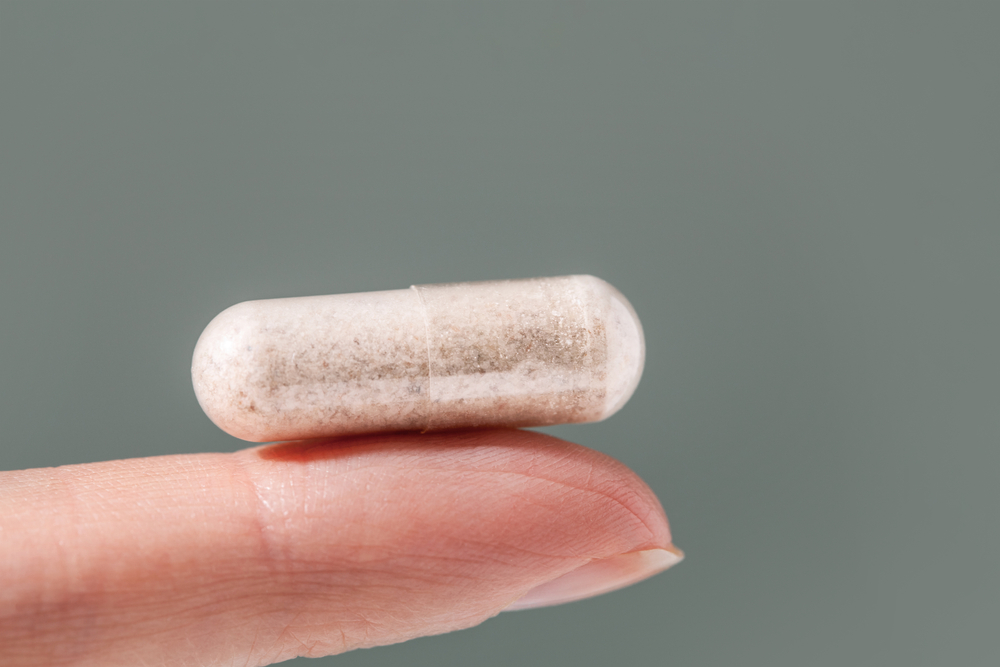
Fiber Supplements
The drug store and supermarket shelves are packed with fiber supplements, so here’s the question: Why not just take those supplements instead of spending time following a high-fiber diet?
Even the best fiber supplements only provide a small amount of necessary fiber, not to mention that the sources of fiber are usually shady. Pay attention to any supplements that contain methylcellulose (also known as synthetic cellulose), wheat dextrin, or calcium polycarbophil, as they provide no nutrients or food value.
In addition, those who are taking some kind of medicine — including cholesterol-lowering, diabetes drugs, seizure medications, and certain antidepressants — shouldn’t take any fiber supplement without a medical prescription. That’s because some fiber supplements may potentially interfere with the absorption of certain meds and some minerals.
Dosage
According to The American Heart Association, adults are recommended to get at least 25 grams of fiber per day. However, the great majority of Americans fall short of the recommended daily fiber intake. Without fiber, the digestive system suffers, and people may develop bad cholesterol, which can contribute to heart disease, as well as chronic inflammation in the body.
For individuals with gastrointestinal diseases, dietary fiber may contribute to relieving symptoms. A high-fiber diet helps maintain the balance of gut bacteria, increasing healthy bacteria while decreasing the bad bacteria that can be the source of some digestive issues.
Consuming too much fiber is also possible, though it’s considerably less common than a fiber deficiency.
Here are the top 15 high-fiber foods!
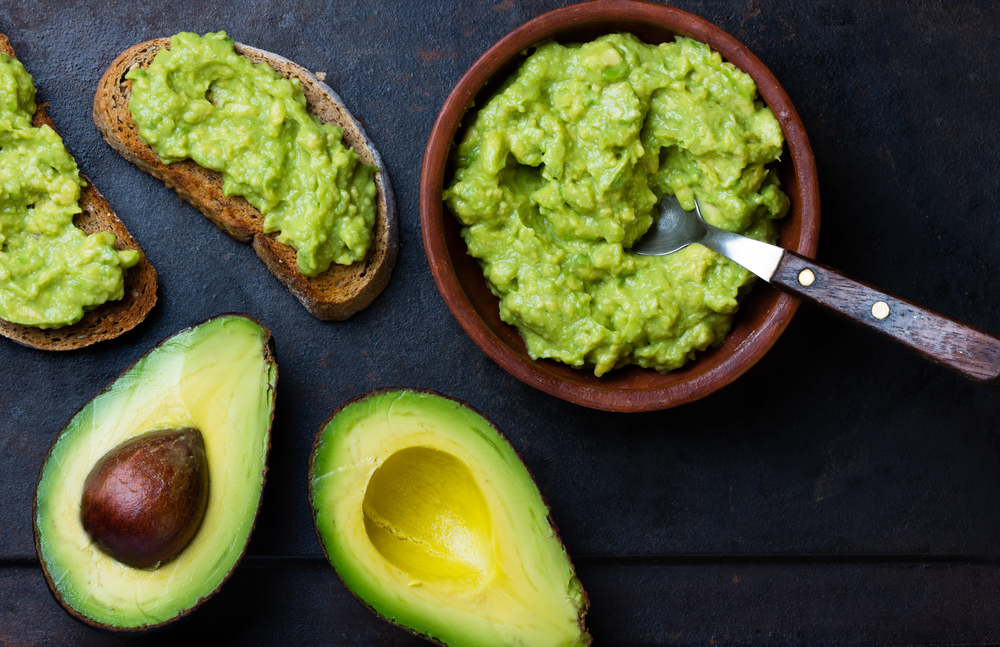
1. Avocado
Fiber: 10 grams per cup of 150 grams
Notable nutrients: Vitamin E, vitamin C, vitamin K, vitamin B6, potassium, folate
According to some nutrition experts, avocado is actually a superfood. This tasty fruit provides health benefits, such as blood sugar and cholesterol management, because it’s a great source of fiber.
Now, the fiber content of these fruits varies depending on the type. That’s because there’s a difference in fiber content and composition between the pear-shaped, bright green, smooth-skinned avocados (Florida avocados) and the smaller, oval-shaped, darker, and dimpled variety (California avocados).
Here’s what you should know: Florida avocados boast a higher amount of insoluble fiber than California avocados.
In addition to being a high-fiber food, they are also packed with healthy fats that can help reduce the risk of cardiovascular disease and lower cholesterol, among other avocado benefits.
2. Berries
Blackberry fiber: 7.6 grams per cup of 144 grams
Blackberry notable nutrients: omega-6 fatty acids, vitamin C, vitamin K, magnesium, manganese, potassium
Raspberry fiber: 8 grams per cup of 123 grams
Raspberry notable nutrients: vitamin C, vitamin E, vitamin A, vitamin K, folate
Berries are high in fiber, including soluble fiber. Studies have shown that eating soluble fiber leads to increased feelings of fullness and reduced hunger.
The blackberry nutrition profile contains high amounts of vitamin K to help boost bone density, while raspberries are high in manganese, which has been linked to helping support skin, healthy bones, and blood sugar levels.
Because they are so delicious, sweet, and versatile, berries also rank as one of the best high-fiber foods for toddlers and kids. This being said, it’s safe to say that berries are also “superfoods”.
3. Coconut
Fiber: 7 grams per cup of 80 grams
Notable nutrients: omega-6 fatty acids, selenium, manganese, folate
Coconut products are becoming increasingly popular, with good reason. Not only does coconut have a low glycemic index, but it’s also easy to incorporate into your diet.
With up to six times the amount of fiber found in oat bran, grated coconut and coconut flour are excellent ways to add natural, healthy fiber to your diet. For most baking recipes, you can replace up to 20% of other flours with coconut flour.
Plus, these high-fiber fruits also contain natural medium chain triglycerides, which promote the growth of healthy bacteria in your gut.
4. Figs
Fiber: 1.9 grams per large fig
Notable nutrients: vitamin B6, potassium, pantothenic acid, copper, manganese
Both fresh figs and dried figs are high-fiber fruits, but here’s a cool fact about them: unlike many other foods, they boast a near-ideal balance of insoluble and soluble fiber. In addition, they have been linked to protection against macular degeneration and lower blood pressure.
A study of 150 participants with irritable bowel syndrome with constipation showed that those who ate about 4 dried figs twice a day had a significant reduction in symptoms — including constipation, pain, and bloating — compared with a control group.
If you’re not into dried figs, fresh ones are delicious and can be served in salads, on cereals, and even stuffed with honey and goat cheese for a special dessert.
5. Artichokes
Fiber: 10 grams per medium artichoke
Notable nutrients: potassium, phosphorus, calcium, magnesium, and vitamins A, E, C, B, K.
Artichokes are high-fiber foods that can help maintain your digestive system healthy by boosting friendly gut bacteria, alleviating diarrhea and constipation, and lowering your risk of certain bowel cancers.
Artichokes also contain inulin, a type of fiber that works as a prebiotic. In one study, 12 participants experienced an improvement in intestinal bacteria when they ate an artichoke extract containing inulin every day for three weeks.
Artichoke extract may also relieve symptoms of indigestion such as heartburn, acid reflux, bloating, and nausea.
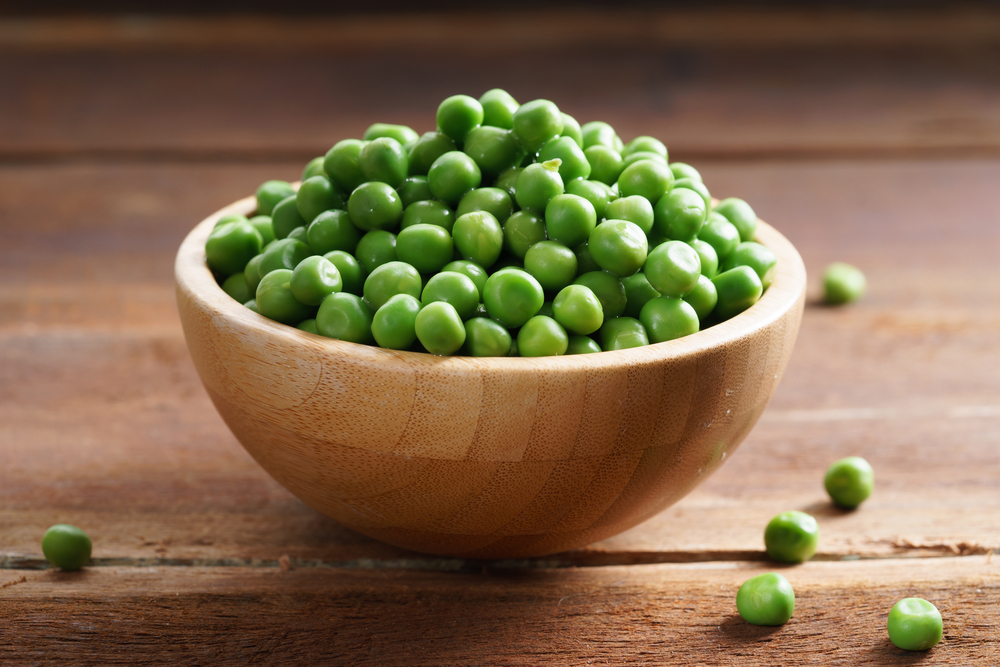
6. Peas
Fiber: 8.8 grams per cup of 160 grams (cooked)
Notable nutrients: protein, folate, manganese, thiamine, vitamin A, vitamin K, vitamin C, vitamin B6
The humble green pea is a high-fiber food, but is also packed with anti-inflammatory properties, powerful antioxidants, and phytonutrients that boost wellness. But that’s not all: peas are also high in proteins, making them an excellent addition to a well-balanced diet for maintaining a healthy weight.
You can find frozen peas year-round, which makes them an easy way to incorporate so many nutrients into your diet. Lightly steam peas, and add them to salads and soups, or have them as a side dish.
7. Acorn Squash
Fiber: 9 grams per cup of 205 grams
Notable nutrients: vitamin C, potassium, magnesium, folate, manganese, vitamin A, vitamin B6, thiamine
Winter squashes, including butternut squash, acorn squash, spaghetti squash, and pumpkins, are packed with fiber and nutrients. The brightly colored and nutrient-dense flesh contains high amounts of soluble fiber, which slows digestion allowing nutrients to be absorbed.
These high-fiber foods also provide insoluble fiber, which is known to prevent constipation and support regular bowel movements.
Acorn squash and other squash varieties can be roasted in the oven and used as an alternative to white potatoes and other starches. They are also great for soups!
8. Black Beans
Fiber: 15 grams per cup of 170 grams
Notable nutrients: magnesium, protein, manganese, thiamine, folate, and phosphorus.
Black beans contain a unique dietary fiber known as resistant starch. Since resistant starches aren’t absorbed or digested in the small intestine, they enter the long intestine in their whole form. Once this happens, resistant starches feed intestinal bacteria making the gut healthier by creating short-chain fatty acids. Gut health is essential for overall health.
One study in rats showed that eating black beans boosted a cluster of healthy bacteria in the gut which may lead to enhanced insulin sensitivity. However, more human research is needed to determine whether those effects are the same for us.
9. Chickpeas
Fiber: 12 grams per cup of 164 grams
Notable nutrients: omega-6 fatty acids, omega-3 fatty acids, protein, manganese, copper, folate
Chickpeas are one of the best high-fiber foods and have been enjoyed around the world for thousands of years. They are rich in many essential nutrients, including manganese.
The fiber found in chickpeas is mostly soluble, which means it blends with water to create a gel-like substance in your digestive tract. As already stated, soluble fiber helps boosts the number of good bacteria in your stomach and prevent the bad bacteria from overgrowing. This may reduce your risk of some digestive conditions, such as colon cancer and irritable bowel syndrome.
According to one review, this high-fiber food may also help improve the consistency, ease, and frequency of bowel movements.
10. Lentils
Fiber: 15.5 grams per cup of 198 grams
Notable nutrients: folate, phosphorus, protein, manganese, iron
As one of the cheapest, healthiest high-fiber foods, lentils are an excellent option if you’re on a tight budget. Not only are lentils packed with fibers, but they also provide high amounts of folate. Folate is essential for people with liver disease, individuals on certain medications, and pregnant women.
A single serving provides 32% of your recommended daily amount of fiber. Lentils can also lower cholesterol and protect against colon cancer and diabetes. A daily dose of high-fiber foods pushes waste through your digestive tract and prevents constipation, too.
Lentil soups and pilafs are a great way to include these high-fiber legumes into your diet.
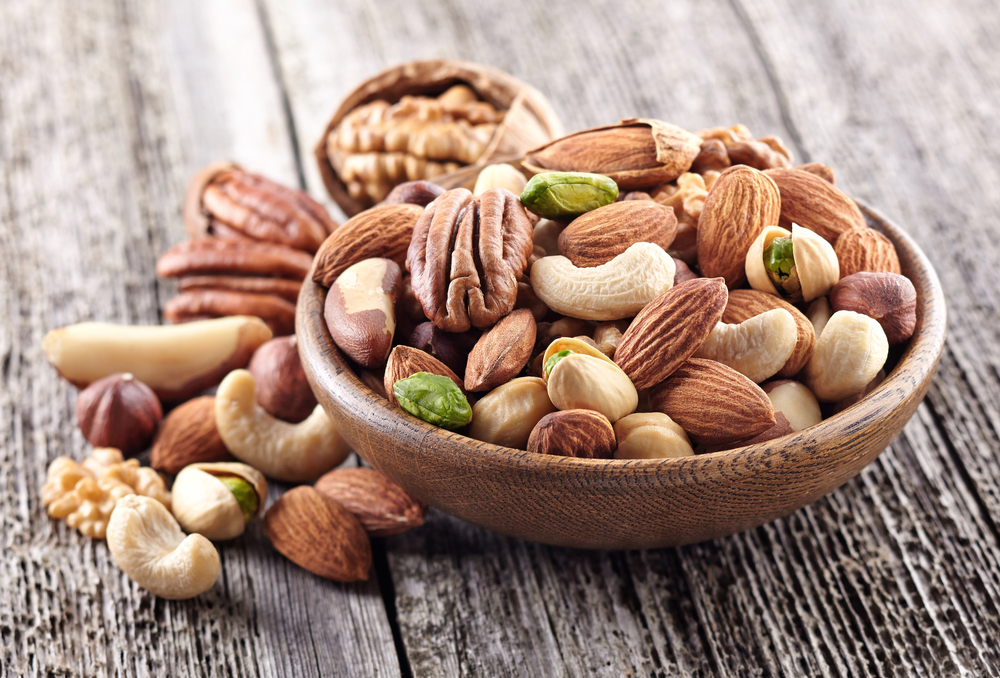
11. Nuts
Walnut’s fiber: 8 grams per cup of 117 grams
Walnut notable nutrients: omega-6 fatty acids, omega-3 fatty acids, protein, copper, manganese, vitamin B6, phosphorus, folate
Almond’s fiber: 11.5 grams per cup of 95 grams
Almond’s notable nutrients: omega-6 fatty acids, protein, manganese, vitamin E, magnesium, riboflavin
While smaller in size than some of the foods mentioned above, nuts are a great way to increase your fiber intake. Here’s an interesting fact: almonds are lower in fats and calories than walnuts but higher in protein and potassium.
Eating walnuts, on the other hand, has been shown to improve memory, mood, and verbal reasoning; these nuts are also believed to improve brain function.
12. Chia Seeds
Fiber: 10.5 grams per oz. (28 grams)
Notable nutrients: omega-6 fatty acids, omega-3 fatty acids, protein, phosphorus, manganese, calcium
Chia seeds are nowadays known as a trendy “superfood” that can be easily included in your diet. Here’s why: they are high-fiber, high-nutritious foods that support digestive health. They also help increase energy and offer many more health advantages.
Like legumes and beans, some people may experience bloating and gas when eating them. Increase your water intake to relieve these symptoms. For some folks, soaking chia seeds may be the best way to prevent these unpleasant symptoms and improve nutrient absorption. Have them in your oatmeal or smoothie, or you can even make your own pudding with a few tablespoons of chia seeds.
13. Quinoa
Fiber: 5 grams per cup of 185 grams (cooked)
Notable nutrients: potassium, iron, magnesium, vitamin B6
Maybe you didn’t know, but quinoa is actually a seed. However, it is often used in cooking as a delicious and nutritious high-fiber cereal grain. All grains are packed with fiber, but not all of them boast of nutrition.
Quinoa nutrition’s fantastic profile and the fact that it’s gluten-free and easy to digest are a few reasons why this is one of the ultimate high-fiber foods.
Quinoa also provides high amounts of essential nutrients, such as vitamin B6, potassium, magnesium, and iron, and is considered one of the top low-fat foods.
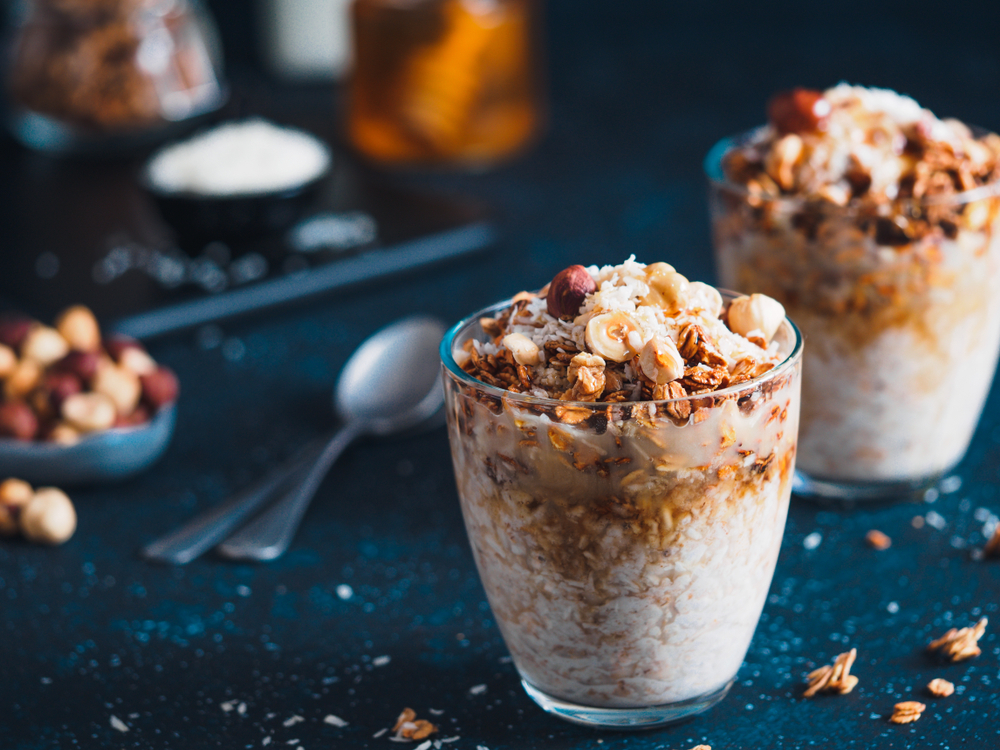
14. Oats
Fiber: 8 grams per cup of 81 grams
Notable nutrients: iron, zinc, manganese, selenium, phosphorus, thiamine
Your bowl of oatmeal contains lots of soluble fiber, specifically beta-glucan. This one dissolves in water and creates a type of gel during digestion. According to the experts, this gel goes through your digestive system, binds to bile acids, and removes them from your body.
Bile acids are compounds primarily made up of cholesterol. Since beta-glucan eliminates bile acids, your body needs to replace them, so it pulls cholesterol from your blood, which is how it lowers your levels.
The high-fiber amount found in oatmeal can do more than just manage high cholesterol. As a gel, it travels slower through your digestive tract, which helps you feel full longer. It may also reduce your risk of developing type 2 diabetes and keep blood sugar levels steady.
15. Bananas
Fiber: 3 grams per one medium banana
Notable nutrients: potassium, manganese, vitamin B6, vitamin C
Besides being high-fiber fruits, bananas also contain other important nutrients. In fact, one medium banana can provide you with over one-fifth of the recommended daily intake of vitamin B6. This water-soluble vitamin is involved in brain function, protein metabolism, and immune health.
While bananas are a great source of soluble fiber, these yellow fruits contain other types of fiber as well. For instance, bananas also provide resistant starch. As already stated, this fiber doesn’t get digested, but it does get fermented by gut bacteria. The process creates short-chain fatty acids known to be a source of energy for the cells in your stomach.
While bananas are high in resistant starch, ripening reduces the amount.
Irritable bowel? Here are 9 Simple Ways to Prevent Acid Reflux and Heartburn!







